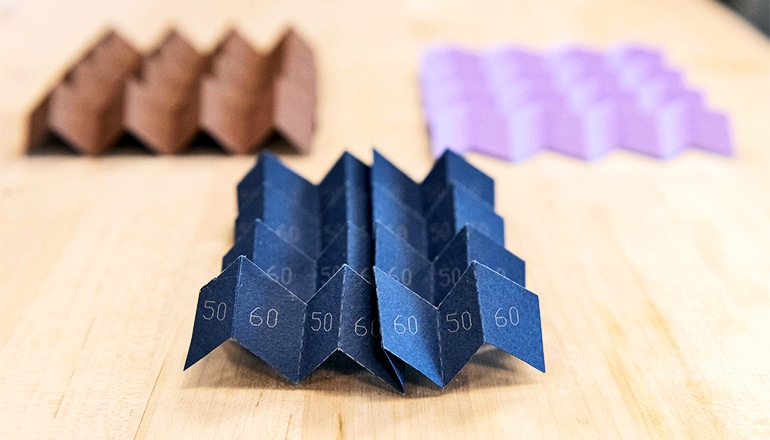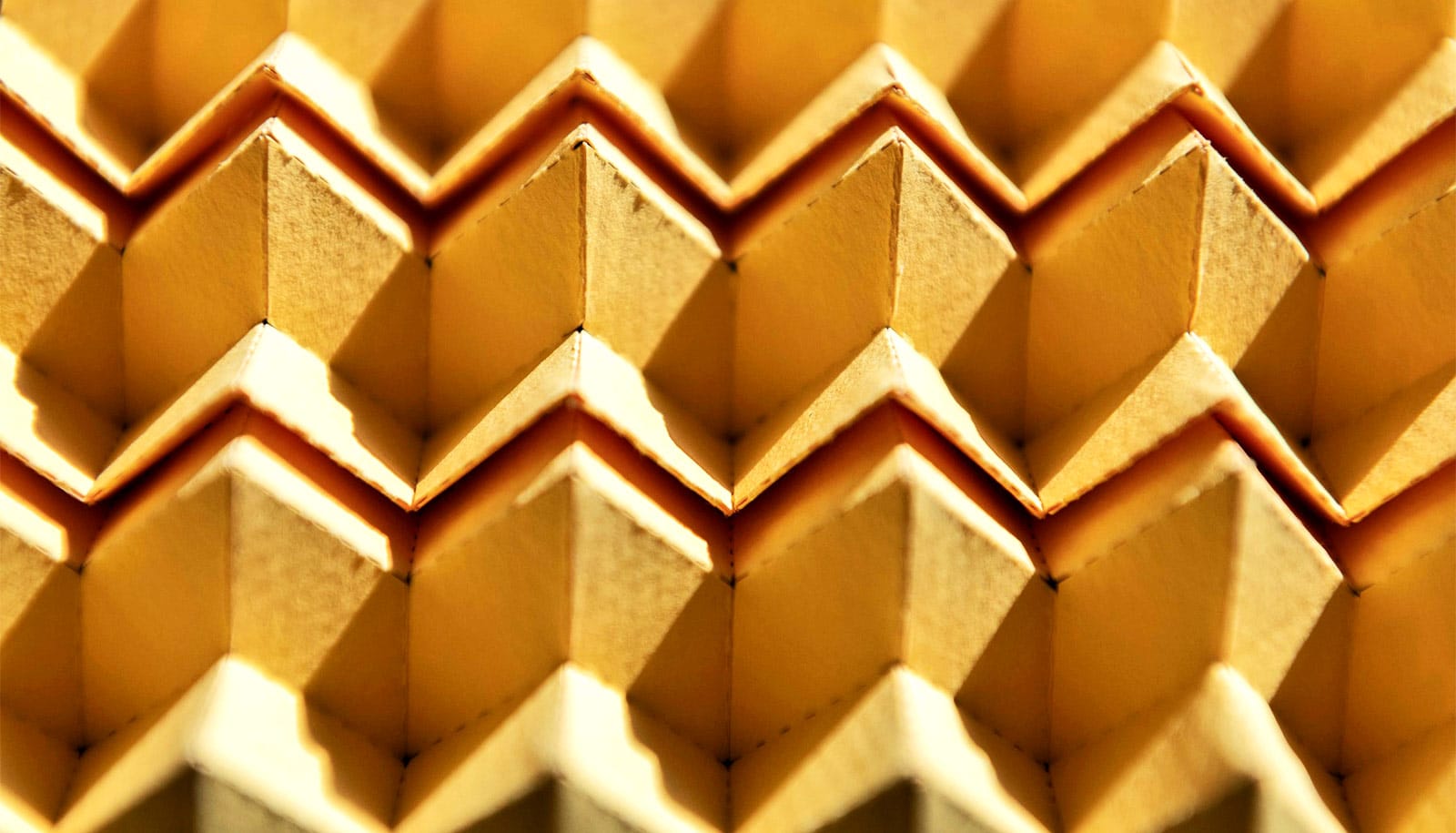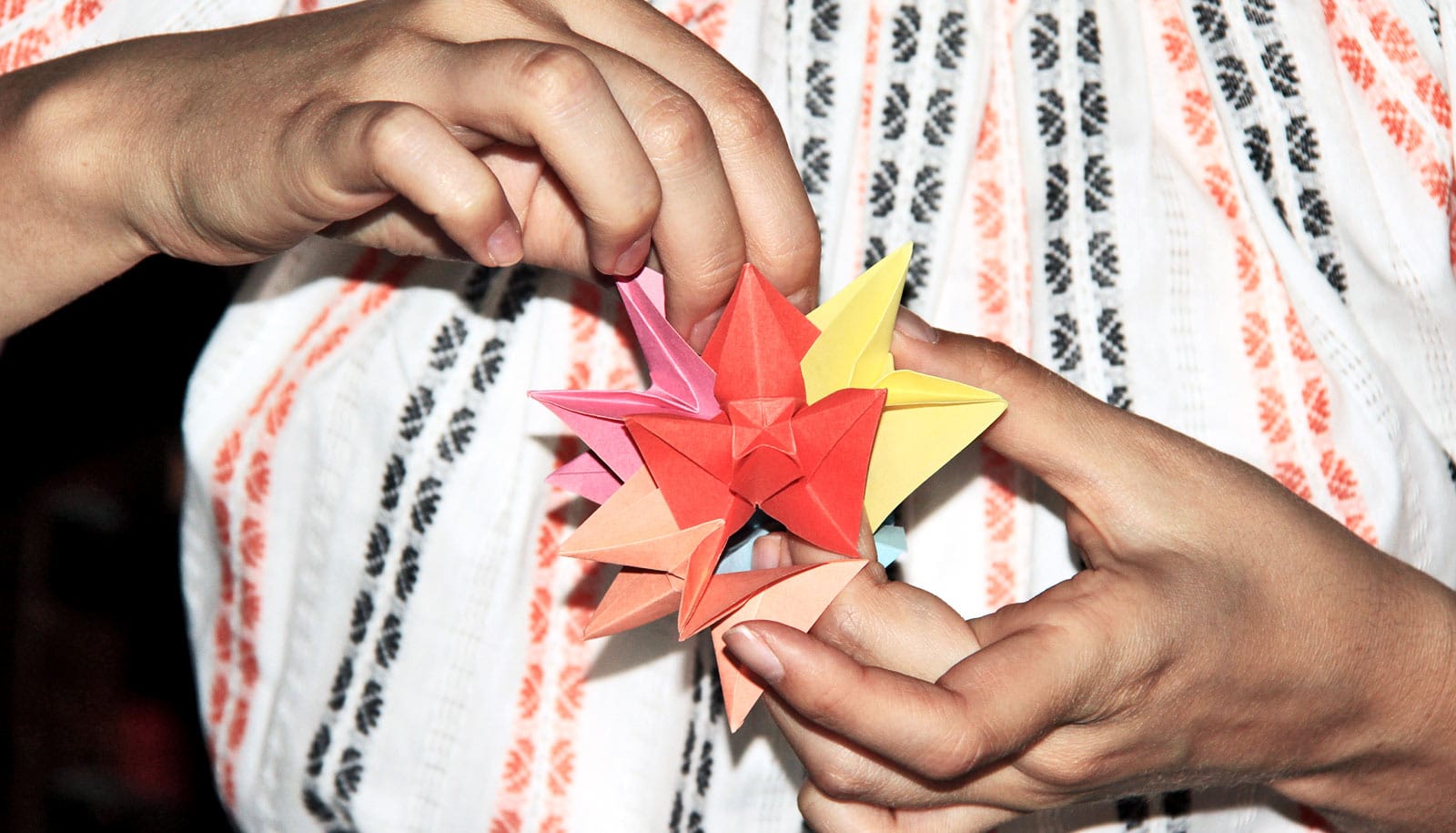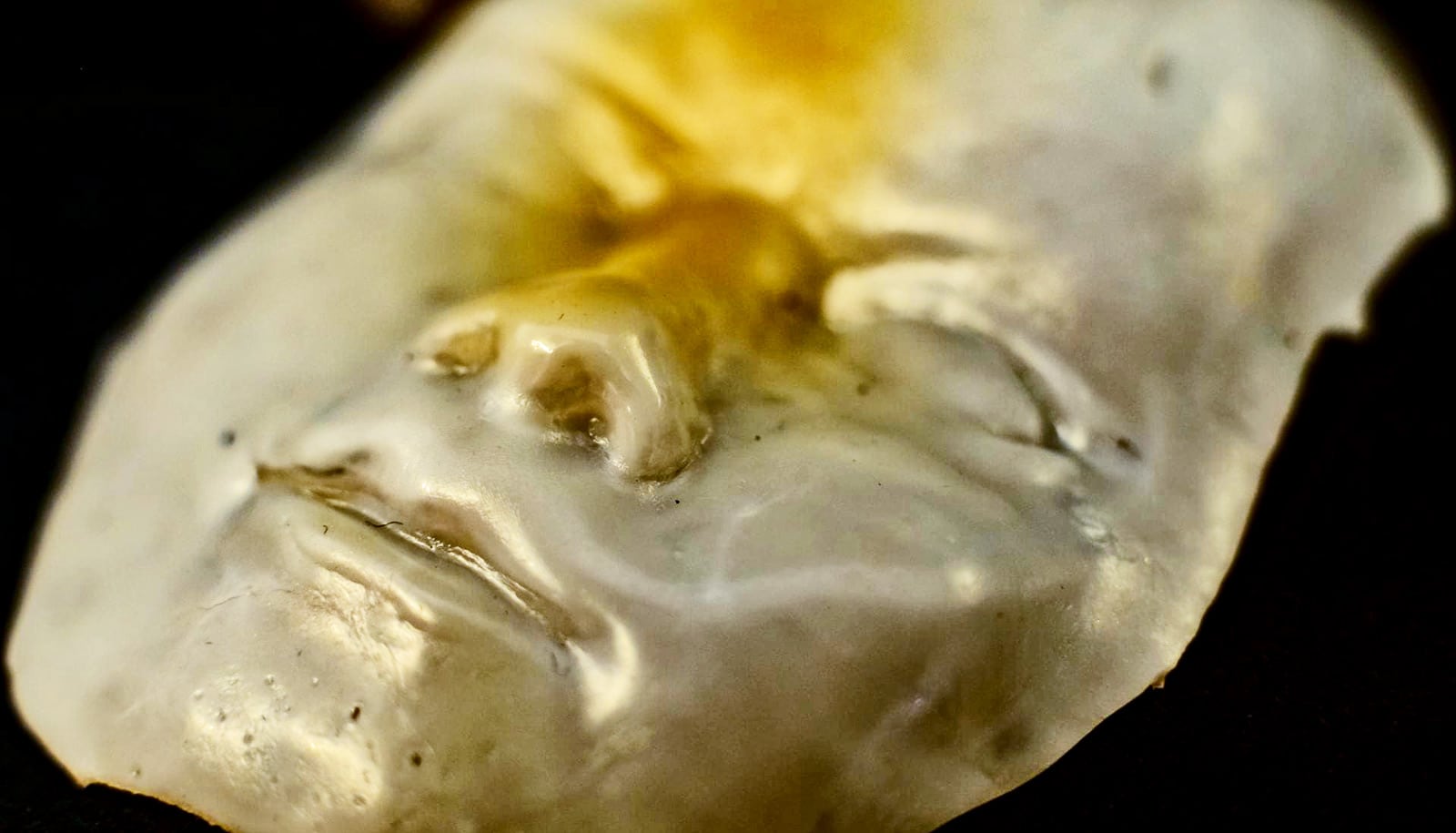A new type of origami can morph from one pattern to another—or even a hybrid of two patterns—instantly altering many of its structural characteristics.
The research could unlock new types of origami-based structures or metamaterials that leverage the characteristics of two types of origami.
Scientists have used origami-based structures to create deployable solar arrays for space, adaptable acoustic systems for symphony halls, and even crash protection systems for flying drones.
“This hybrid origami allows for reprogrammable mechanical properties and the ability to change those properties while the material is in service,” says Glaucio Paulino, a professor in the School of Civil and Environmental Engineering at Georgia Tech.

The researchers started with two types of origami patterns: the Miura-ori and the eggbox, both of which can form into sheets of repeating patterns. The Miura-ori looks like rows of folded zigzags, while the eggbox pattern resembles a mountain range with repeating peaks and valleys.
Both can compress into a very small space, but when expanded behave differently from one another in how they respond to bending. The eggbox pattern resembles a dome when bent, and the Miura-ori takes the shape of a saddle.
“Traditionally, if you have an eggbox pattern, you are locked into the characteristics of that particular pattern,” Paulino says. “With this new pattern, which we are calling morph, that’s no longer the case.”
A redesign of the geometry of two of the four planes that comprise one section of the origami allows the new pattern to achieve its morphing ability. Shrinking the two planes on one side enables their creases to shift from a mountain to a valley, or in other words, to fold in the opposite direction.
And importantly, the transition from peak to valley can occur whether the origami forms from a flexible material such as paper or a rigid material such as metal.
That means, for example, that origami-based structures used for acoustic systems—which can already expand and contract to increase or decrease the volume of the sound response—could go one step further, changing how they bend to potentially offer an even greater range of resonant responses.
In the example of the drone crash protection system, the new origami pattern could potentially offer other customization options or alter aspects of its impact resistance, Paulino says.
The new origami pattern can also take on a hybrid structure, where certain rows fold into one configuration and others fold in the other. In such a configuration, the structure would exhibit characteristics of both types.
“There are a large number of combinations in terms of how these could be configured, which offers a lot of customization possibilities for structures based on the morph pattern,” says Ke Liu, a postdoctoral scholar at the California Institute of Technology.
Another unique characteristic of the morph pattern happens when a Miura-ori row lies between two eggbox rows. Typically, when tension pulls apart either of the patterns, they give in and flatten their shape. However, in this new instance, the Miura-ori pattern locks into place.
“The locking is very strong, and there is no way to break that hold other than to tear the entire structure apart,” says Phanisri Pratapa, an assistant professor of civil engineering at the Indian Institute of Technology Madras.
The locking could enable structures to limit the amount of expansion possible and change that limit on the fly, Pratapa says.
The research appears in Physical Review Letters. The National Science Foundation and the Raymond Allen Jones Chair at Georgia Tech supported the work.
Source: Georgia Tech



